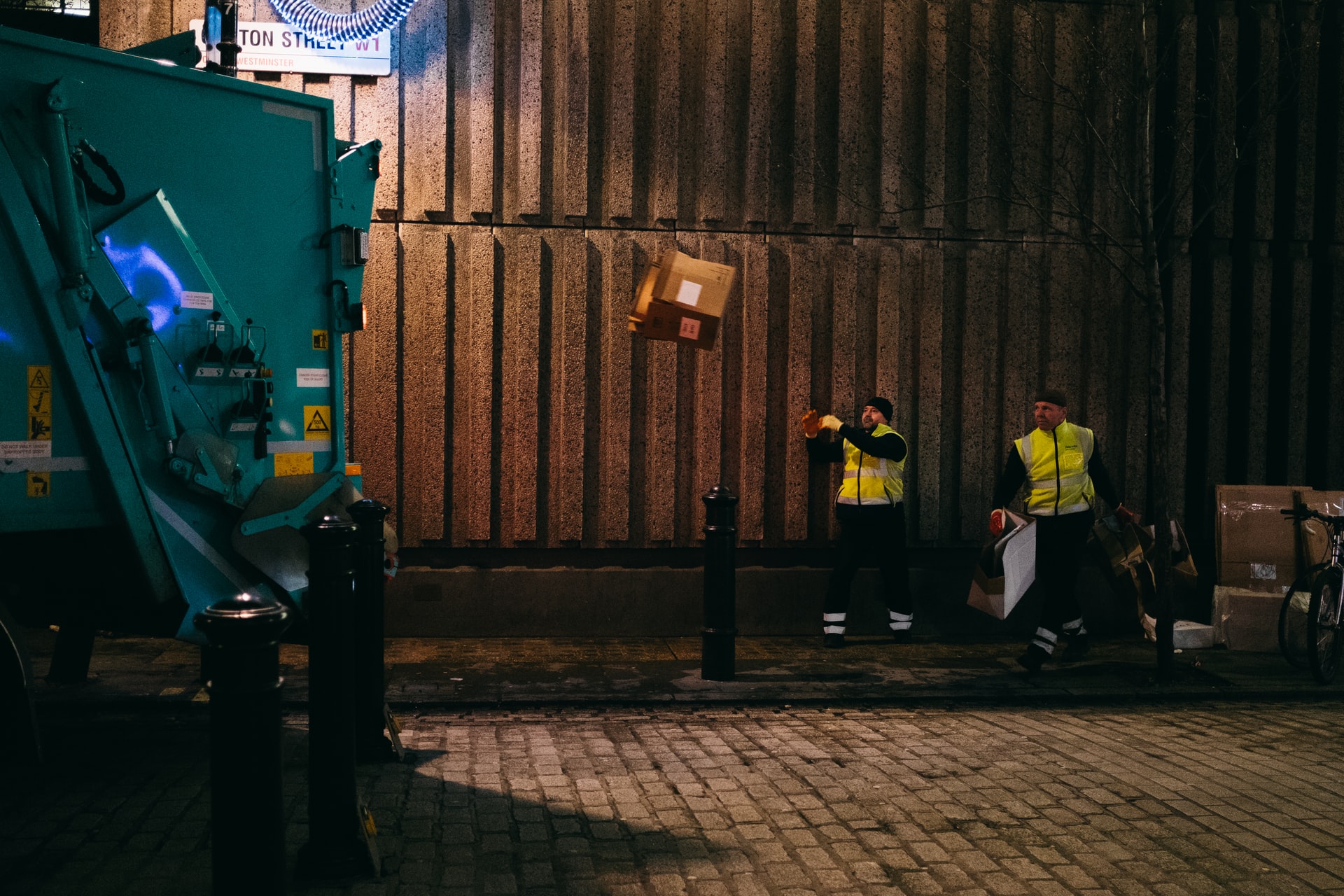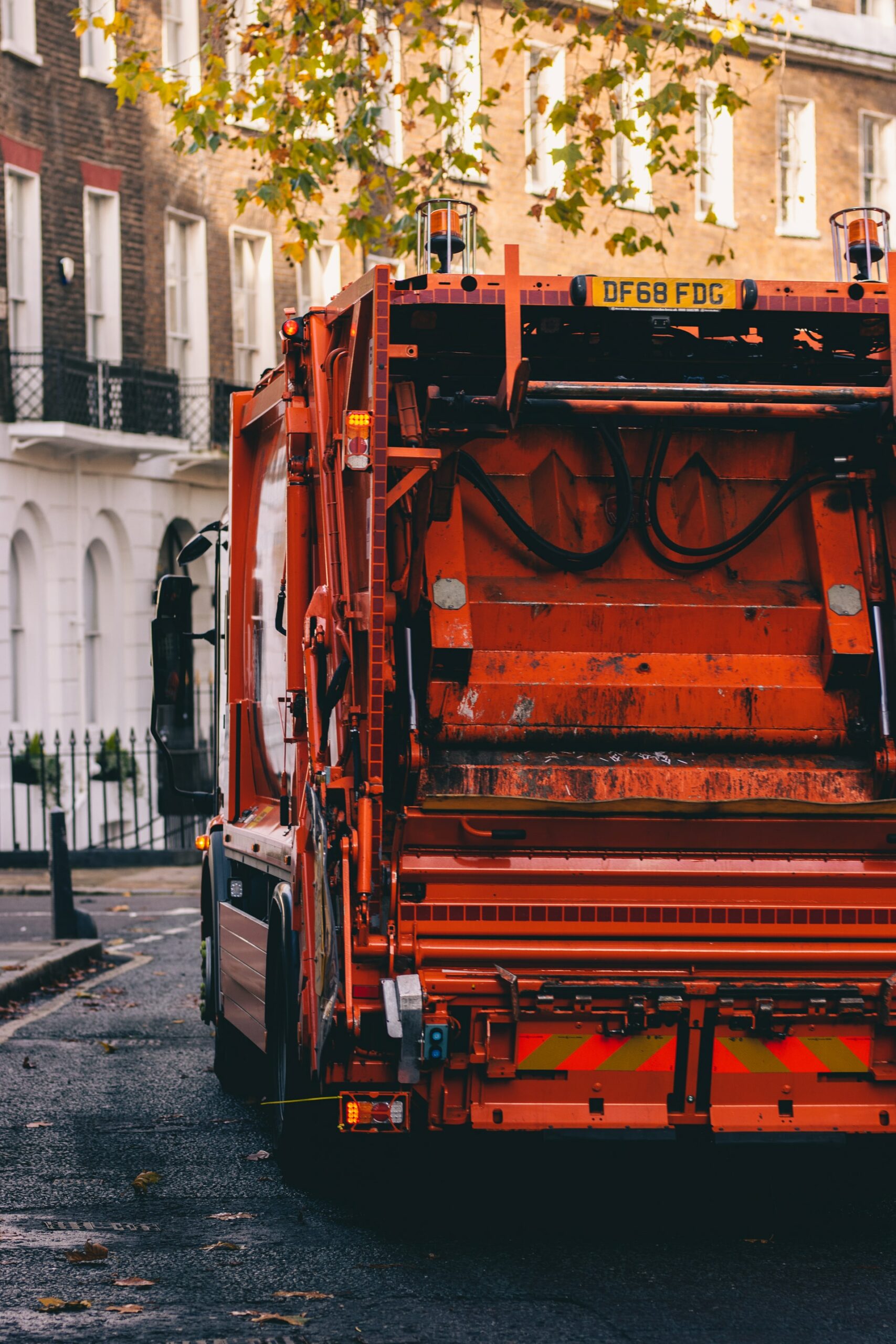Visualizing
the Virus
Waste and the problem of visibility
Towards a multi-sensual account of COVID-19
The management of waste is in many ways the management of its visibilities, or invisibilities. This has long been a matter of concern for discard studies (see Balayannis 2020; Pikner and Jauhiainen 2014) but has come to the fore during the COVID-19 outbreak. In our research of the UK waste sector, we are working with industry associations, workers, and local authorities to understand the extent to which the sector was prepared for COVID-19, and what it might be able to learn from the pandemic moving forward. As the first UK lockdown came into force in March 2020, the priority of local authorities was to avoid the public health issue of “waste piling up on the streets” by maintaining the delivery of services. At the same time, disposable PPE, or “coronalitter”, became a key matter of environmental concern. However, such visual framings of the problem of waste translate a little too easily into success stories – or the responsibilisation of a systemic problem – overlooking relations of power that allow for a more critical reading of infrastructural resilience in and beyond the pandemic.
Waste collectors, who have worked throughout the pandemic as ‘key workers’, have been crucial to the COVID-19 response, ensuring that discarded materials continue to flow through waste streams. Across the interviews we conducted with workers in Glasgow, collectors reported high workloads and pressured conditions (see Hélène Beraud and Mathieu Durand’s Post-Covid Waste project for a related study in France). They also provided explanations of the underlying causes of these working conditions, emphasising that it was not only the pandemic but, rather, a deep-rooted failure to invest in this public service that put pressure on workers. The financialisation and marketisation of the sector (Gregson and Forman 2021) fundamentally shapes how waste collection is being delivered by those on the ‘frontline’ – which in turn affects the magnitude of the problems that waste management presents.
The unionised ‘cleansing workers’ we interviewed about their experience of working through the pandemic noted the long hours and difficulties of maintaining disposal targets. One individual, quoted below, linked these realities to “the deal”, or more specifically the contracts, that local authorities hold with companies:
It’s just, they’ve [local authorities] always got this thing in their head: “we need to get these hours back”. It’s a constant fight to maintain this deal we’ve got, if you know what I mean? So, I’m constantly on about trying to get these levels [amount of waste collected] back to where they should be. I know they’re under a lot of pressure because Glasgow’s a bit of a mess now. But, I mean, it’s more the fact that they’ve not invested in the service […]
The increase in hours and workload, and the hazards and risks waste collectors encounter day-to-day, put stresses on health and wellbeing that have been further exacerbated by the pandemic.
I feel like I’m literally living underground for the last three months. And that’s what it felt like to me, that I was getting let out once a day to go to work. You see, that’s a constant routine: work, home life, home schooling, work, home life, home schooling. And you don’t get your wee bit of steam to blow off with your pals. […] I definitely think it eventually wore me down and I was starting to get anxiety about it, especially with it on the news just every day, talking about new variants and all the rest of it.
The waste sector was clearly under strain before COVID-19 but as the quote above from a cleansing worker illustrates, those working on the frontline are now also reaching their limits.
Moving beyond what’s visible on streets and pavements to listen to the experiences of key workers in public services has revealed cracks and strains in critical infrastructures. Learning from ethnographers of waste to attend to workers as infrastructural pressure points enables us to stitch together the embodied, social, material, economic, and political dimensions of waste work (e.g. Fredericks 2018; Nagle 2016). This is a multi-sensual process of listening, feeling, and understanding the ways in which the virus attaches to already stretched and frayed tissues and organs, systems, and infrastructures.
This text was written by:
Emma Garnett (King’s College London)
Angeliki Balayannis (University of Exeter)
Steve Hinchliffe (University of Exeter)
Thom Davies (University of Nottingham)
Toni Gladding (The Open University)
Phil Nicholson (University College London)
References
Balayannis A. (2020). ‘Toxic sights: The spectacle of hazardous waste removal’. Environment and Planning D: Society and Space. 38(4): 772-790.
Fredericks, R. (2018). Garbage Citizenship: Vital Infrastructures of Labor in Dakar, Senegal. Duke University Press.
Gregson, N, Forman, PJ. (2021) England’s municipal waste regime: Challenges and prospects. Geographical Journal. 187: 214– 226.
Nagle, R. (2013). Picking up: On the Streets and behind the Trucks with the Sanitation Workers of New York City. Macmillan.
Pikner, T and Jauhiainen, S.J. (2014). ‘Dis/appearing waste and afterwards’. Geoforum, 54: 39-48.



